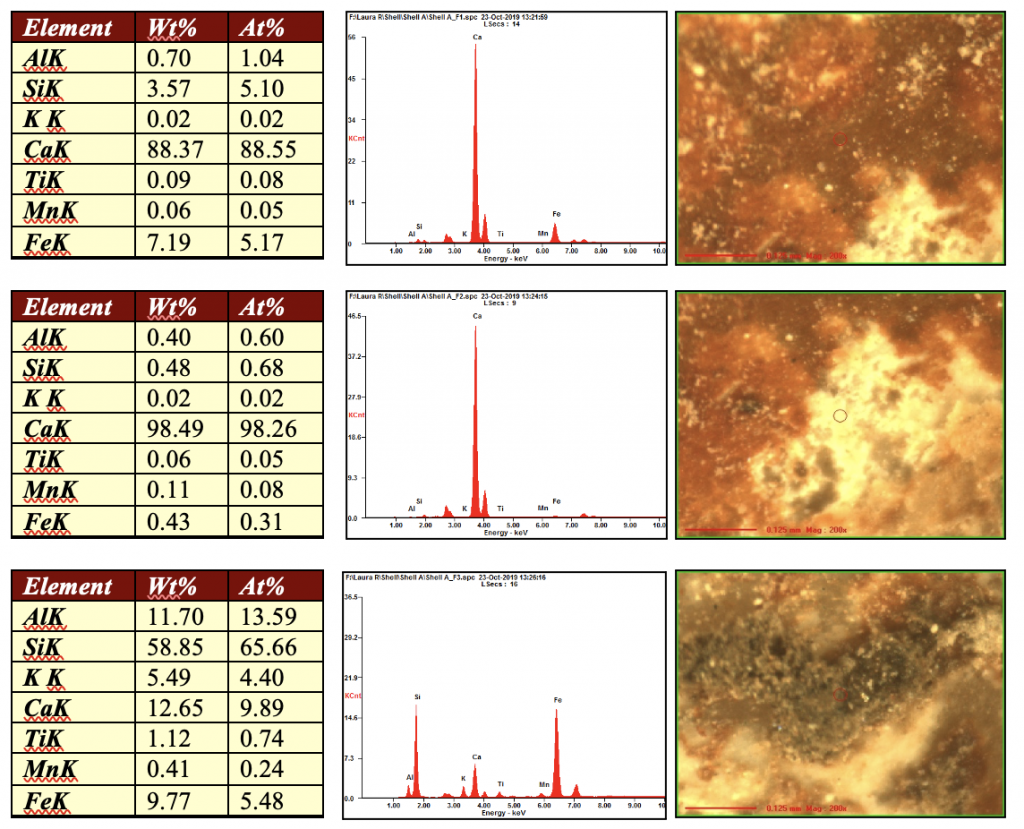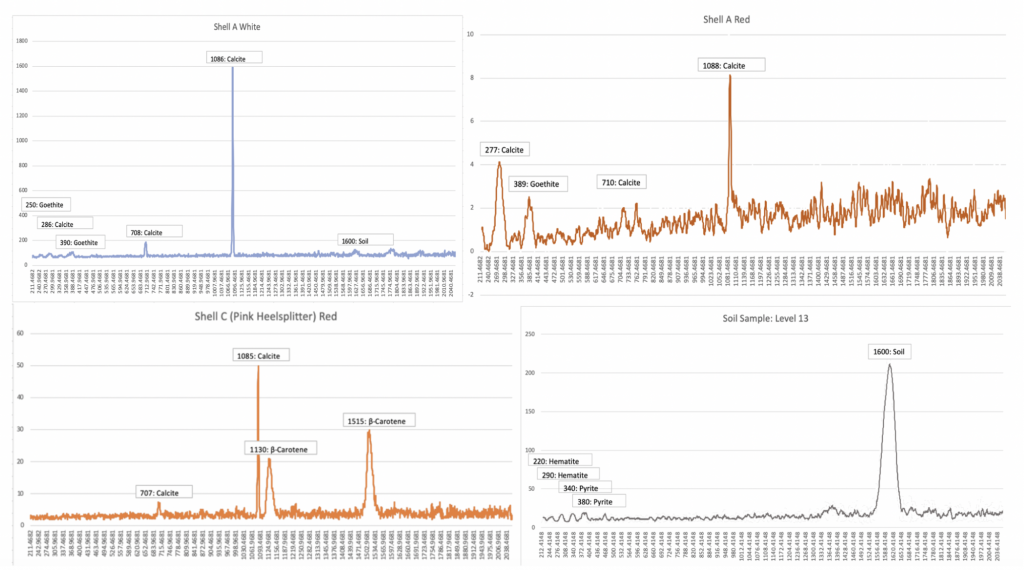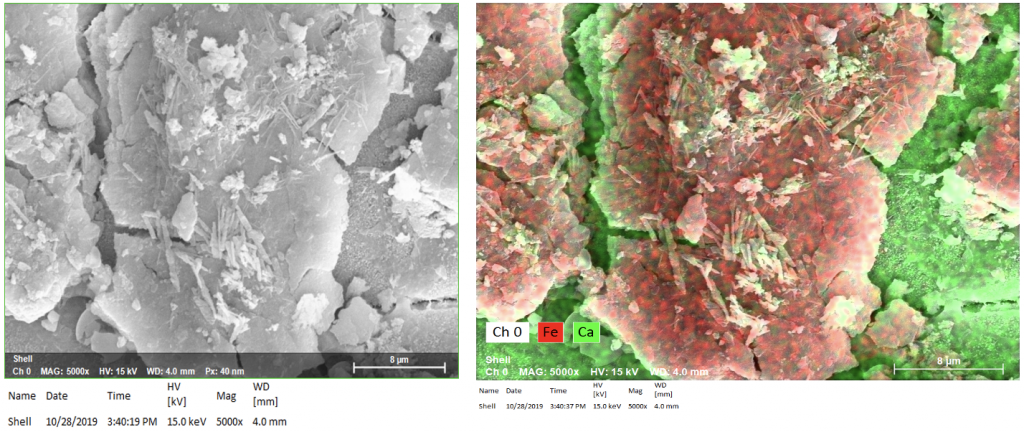Red Pigmentation of Mussel Shells at the Middle Grant Creek Site
Project Date: Fall 2019
Equipment & Techniques: X-Ray Fluorescence (XRF), Raman Spectroscopy, Scanning Electron Microscopy
Read Essay Here

Mussel shell traced to the Oneota tradition, a prehistoric-protohistoric culture extending from Lake Michigan to the Missouri river. There is evidence of these shells used within ritual contexts as ornamentation, revealing possible motivation for adding coloration to their surfaces.

XRF revealed that red portions of the shell corresponded with higher iron, but so did clumps of dirt on the surface, not ruling out the surrounding soil as a source of iron deposits.

Raman spectra demonstrating three distinct sources of iron: goethite (iron oxyhydroxide, FeOOH), hematite (iron oxide, Fe2O3), pyrite (iron disulfide, FeS2). Additionally, shell C demonstrated a non-iron source of red coloration, β-Carotene (C40H56). This demonstrated that the iron on the shell surface differed in form from iron in the soil.

Within Scanning Electron Microscopy images, the iron-rich regions still show evidence of calcium, indicating that the red pigment seeped into the porous shell surface.

SEM allowed for a smaller sample than XRF, resulting in a higher iron content within red portions. Additionally, the high oxygen content observed in SEM corresponds with the presence of iron oxyhydroxide, or goethite–an oxygen containing molecule.
